-

Feb
06
Interpretive Summary: Differences in severity of reticulo-rumen pH drop in primiparous Holstein cows fed the same diet during transition and early lactation: effects on performance, energy balance, blood metabolites, and reproduction

Research on nutritional and metabolic factors that influence the production performance and health of cattle is highly important. This study investigated how different severity of ruminal pH drop influences lactation performance, energy balance, and blood metabolites in primiparous cows when these are fed a similar high-grain diet.
Read more
-

Feb
06
Interpretive Summary: The effect of feeding order of forage and oats on metabolic and digestive responses related to gastric emptying in horses
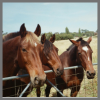
Horses have evolved as grazing nonruminant herbivores with a relatively small stomach and a highly specialized hindgut capable of fermenting fibrous feeds. However, domestication might have altered the feeds consumed by horses, and today conserved forages and starch-rich concentrates often make up the ration as a substitute or supplement to grazing.
Read more
-

Feb
06
Interpretive Summary: Effect of feeding high oleic soybean oil to finishing pigs on growth performance, carcass characteristics, and meat quality
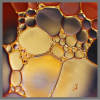
The supplementation of oils in pigs’ diets can affect pork’s fatty acid (FA) composition. It is recommended that humans consume more unsaturated fats due to their health benefits. One strategy to enhance the unsaturated fat profile of pork is feeding dietary fat sources high in unsaturated fats to pigs.
Read more
-

Feb
06
Interpretive Summary: Effect of pre-farrowing hygiene routine (sub-standard vs. optimal) and creep feeding regime (dry pelleted starter diet vs. liquid mixture of milk replacer and starter diet)...
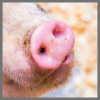
Litter sizes on commercial pig farms have increased in the past number of decades. To support these large litters, creep feeding suckling piglets with a dry pelleted starter diet is commonly practiced on commercial farms, but creep feed intake can be low and variable. Increasing creep feed intake should increase pre-weaning growth and better prepare pigs for weaning.
Read more
-

Feb
06
Interpretive Summary: Identification of transcriptional regulators and signaling pathways mediating postnatal rumen growth and functional maturation in cattle
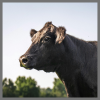
The rumen is the largest digestive organ in adult ruminants, where feed is digested into volatile fatty acids (VFAs) and where most VFAs are absorbed and metabolized. However, ruminants are not born with a large, functional rumen. The rumen undergoes significant growth and functional changes from birth to adulthood.
Read more
-

Feb
06
Interpretive Summary: Effects of a preweaning socialization system on piglet livability, lifetime growth performance, and subsequent sow performance
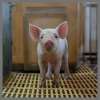
A preweaning socialization system is described as the co-mingling of non-littermate piglets before weaning. This approach allows 2 or more unfamiliar litters to interact and socialize during the lactation period. This system involves the removal of dividers between farrowing stalls and walkways and allows piglets to freely socialize while the sow remains in her stall.
Read more
-

Jan
31
Washington Roundup - January 2025

President Trump Begins Second Term with Numerous Executive Orders:
In the first week of his Administration, President Donald Trump has signed dozens of Executive Orders (EOs) impacting a wide variety of policy areas. A summary of selected actions follows.
Read more
-

Jan
23
Interpretive Summary: Guiding principles of AI: application in animal husbandry and other considerations

Increased efficiency and productivity: AI can significantly enhance decision-making in various aspects of farm management, from feeding to animal health monitoring. Real-time data analysis enables resource optimization, leading to reduced waste and improved efficiency.
Read more
-

Jan
23
Interpretive Summary: Artificial intelligence for livestock: a narrative review of the applications of computer vision systems and large language models for animal farming
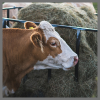
Artificial intelligence (AI) has become essential for decision-making across various industries. The number of research projects involving AI increased by 2.5 times between 2010 and 2018 compared to the previous decade (Lu, 2019). Companies investing in AI have seen significant improvements in sales, employment, and market value (Babina et al., 2024).
Read more
-

Jan
23
Interpretive Summary: Computational approaches for enteric methane mitigation research: from fermi calculations to artificial intelligence paradigms

Governments worldwide have made various commitments to address climate change. The first international treaty related to climate change was the Kyoto Protocol of the United Nations Framework Convention on Climate Change (UNFCCC). This agreement set targets to reduce greenhouse gas (GHG) emissions to 5% below 1990 levels and this commitment was made by 37 countries and the European Union (UNFCCC, 1997).
Read more
-

Jan
23
Interpretive Summary: The role of artificial intelligence in Latin American ruminant production systems

Today, cutting-edge technologies—internet of things (IoT), big data, cloud computing, and artificial intelligence (AI)—play a forefront role in sustainable livestock production (Morrone et al., 2022; Dayoub et al., 2024; Melak et al., 2024). AI, a subfield of computer science that simulates human intelligence enables real-time monitoring and analytical processing in the ruminant sector to boost production efficiency and animal welfare (Neethirajan, 2023; Dayoub et al., 2024).
Read more
-

Jan
23
Interpretive Summary: Computer vision algorithms to help decision-making in cattle production
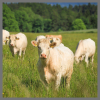
In recent years, integrating computer vision technologies into precision livestock farming (PLF) management systems have the potential to transform how cattle producers collect, monitor, analyze, and optimize animal production. Livestock production, particularly in cattle farming, encompassing beef and dairy under intensive and extensive production systems, faces numerous challenges ranging from optimizing feeding practices to detecting and managing diseases.
Read more
-

Jan
16
Interpretive Summary: Selenium deficiency modulates necroptosis-mediated intestinal inflammation in broiler through the lncRNAWSF27/miRNA1696/GPX3 axis
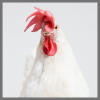
Intestinal inflammation caused by selenium (Se) deficiency is one of the causes of broiler diarrhea, which can harm the health of poultry. The addition of Se is the current method to relieve this problem, but it has not fundamentally resolved intestinal inflammation. Therefore, we are looking for new strategies to alleviate intestinal inflammation by studying the specific mechanisms underlying Se deficiency.
Read more
-

Jan
16
Interpretive Summary: Effects of maternal Cu, Mn, and Zn supplementation from different sources on physiological and productive responses of cows and their offspring

Trace minerals like Zn, Cu, and Mn play essential roles in fetal development, particularly in the formation of the nervous, reproductive, and immune systems. However, their bioavailability might differ depending on the source offered to the animals. This study investigated the impacts of different sources of trace minerals (hydroxychloride [HDX] vs. organic-complexed [ORG] vs. sulfate [INR]) on maternal and offspring responses.
Read more
-

Jan
16
Interpretive Summary: Pregnancy affects maternal performance, feed intake, and digestion kinetics parameters in beef heifers
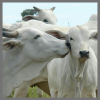
Gestation is a physiological condition characterized by a high demand for nutrients to support fetal development, particularly during the late stages of pregnancy. During this time, the ruminal capacity is limited due to the loss of space by the growing pregnant uterus, potentially affecting feed intake.
Read more
-

Jan
16
Interpretive Summary: Effect of multispecies fungal extract supplementation on growth performance, nutrient digestibility, ruminal fermentation, and the rumen microbiome composition of beef cattle fed forage-based diets
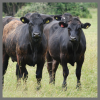
Enhancing the digestibility of fibrous feeds from cattle diets will benefit the productivity, efficiency, and sustainability of beef cattle operations. These experiments aimed to evaluate the effect of a multispecies fungal extract (MFE) on fiber digestibility and ruminal fermentation; and how these might be associated with growth performance in beef cattle. Diets (forage-based) were offered for ad libitum intake with or without the inclusion of an MFE.
Read more
-

Jan
16
Interpretive Summary: Evaluation of kernel processing and processor type in whole-plant sorghum silage: effects on nutrient digestibility and animal performance in backgrounding beef heifers
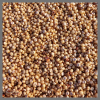
These 2 experiments evaluated the effects of feeding whole-plant sorghum silage (WPSS) with different kernel processing strategies on beef heifers’ nutrient digestibility and growth performance. In experiment 1, using 24 individually housed heifers, we contrasted 3 treatments: A) unprocessed (UNP), B) conventionally processed (CONV), and C) shredlage processed (SHRD) silage.
Read more
-

Jan
14
The Giving Herd - ASAS Foundation Newsletter - January 2025
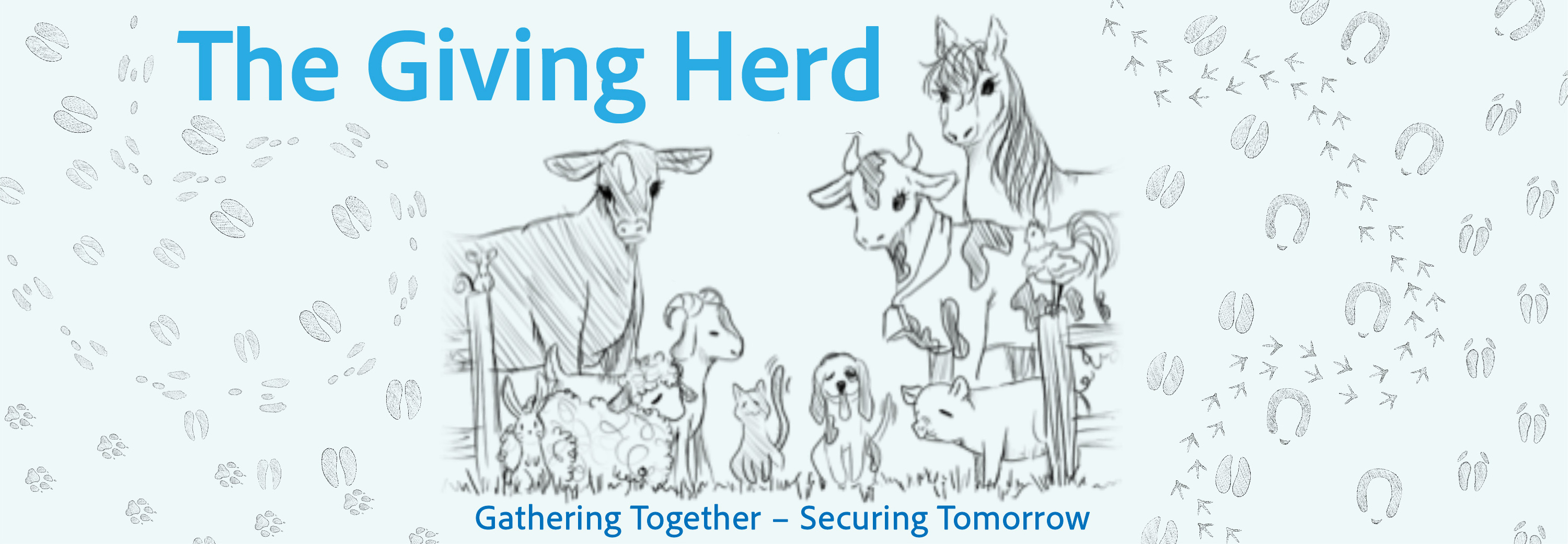
The January Edition of The Giving Herd, an ASAS Foundation Newsletter
Read more
-

Jan
13
Meet Paisli Ivey - 2025 D.C. Animal Agriculture Policy Intern

Meet Paisli Ivey - 2025 D.C. Animal Agriculture Policy Intern
Read more
-

Jan
09
Interpretive Summary: Effects of cashew nutshell extract inclusion into a high-grain finishing diet on methane emissions, nutrient digestibility, and ruminal fermentation in beef steers

In the near future, the U.S. beef industry will face the challenge of meeting a significant increase in global demand for beef, which could contribute to an increase in methane emissions from livestock. To mitigate methane (CH4) emissions, the use of plant secondary metabolites, such as anacardic acid found in cashew nutshell extract (CNSE) has been explored.
Read more
 FebInterpretive Summary: Differences in severity of reticulo-rumen pH drop in primiparous Holstein cows fed the same diet during transition and early lactation: effects on performance, energy balance, blood metabolites, and reproduction
FebInterpretive Summary: Differences in severity of reticulo-rumen pH drop in primiparous Holstein cows fed the same diet during transition and early lactation: effects on performance, energy balance, blood metabolites, and reproduction Research on nutritional and metabolic factors that influence the production performance and health of cattle is highly important. This study investigated how different severity of ruminal pH drop influences lactation performance, energy balance, and blood metabolites in primiparous cows when these are fed a similar high-grain diet.
Research on nutritional and metabolic factors that influence the production performance and health of cattle is highly important. This study investigated how different severity of ruminal pH drop influences lactation performance, energy balance, and blood metabolites in primiparous cows when these are fed a similar high-grain diet. FebInterpretive Summary: The effect of feeding order of forage and oats on metabolic and digestive responses related to gastric emptying in horses
FebInterpretive Summary: The effect of feeding order of forage and oats on metabolic and digestive responses related to gastric emptying in horses Horses have evolved as grazing nonruminant herbivores with a relatively small stomach and a highly specialized hindgut capable of fermenting fibrous feeds. However, domestication might have altered the feeds consumed by horses, and today conserved forages and starch-rich concentrates often make up the ration as a substitute or supplement to grazing.
Horses have evolved as grazing nonruminant herbivores with a relatively small stomach and a highly specialized hindgut capable of fermenting fibrous feeds. However, domestication might have altered the feeds consumed by horses, and today conserved forages and starch-rich concentrates often make up the ration as a substitute or supplement to grazing. FebInterpretive Summary: Effect of feeding high oleic soybean oil to finishing pigs on growth performance, carcass characteristics, and meat quality
FebInterpretive Summary: Effect of feeding high oleic soybean oil to finishing pigs on growth performance, carcass characteristics, and meat quality The supplementation of oils in pigs’ diets can affect pork’s fatty acid (FA) composition. It is recommended that humans consume more unsaturated fats due to their health benefits. One strategy to enhance the unsaturated fat profile of pork is feeding dietary fat sources high in unsaturated fats to pigs.
The supplementation of oils in pigs’ diets can affect pork’s fatty acid (FA) composition. It is recommended that humans consume more unsaturated fats due to their health benefits. One strategy to enhance the unsaturated fat profile of pork is feeding dietary fat sources high in unsaturated fats to pigs. FebInterpretive Summary: Effect of pre-farrowing hygiene routine (sub-standard vs. optimal) and creep feeding regime (dry pelleted starter diet vs. liquid mixture of milk replacer and starter diet)...
FebInterpretive Summary: Effect of pre-farrowing hygiene routine (sub-standard vs. optimal) and creep feeding regime (dry pelleted starter diet vs. liquid mixture of milk replacer and starter diet)... Litter sizes on commercial pig farms have increased in the past number of decades. To support these large litters, creep feeding suckling piglets with a dry pelleted starter diet is commonly practiced on commercial farms, but creep feed intake can be low and variable. Increasing creep feed intake should increase pre-weaning growth and better prepare pigs for weaning.
Litter sizes on commercial pig farms have increased in the past number of decades. To support these large litters, creep feeding suckling piglets with a dry pelleted starter diet is commonly practiced on commercial farms, but creep feed intake can be low and variable. Increasing creep feed intake should increase pre-weaning growth and better prepare pigs for weaning. FebInterpretive Summary: Identification of transcriptional regulators and signaling pathways mediating postnatal rumen growth and functional maturation in cattle
FebInterpretive Summary: Identification of transcriptional regulators and signaling pathways mediating postnatal rumen growth and functional maturation in cattle The rumen is the largest digestive organ in adult ruminants, where feed is digested into volatile fatty acids (VFAs) and where most VFAs are absorbed and metabolized. However, ruminants are not born with a large, functional rumen. The rumen undergoes significant growth and functional changes from birth to adulthood.
The rumen is the largest digestive organ in adult ruminants, where feed is digested into volatile fatty acids (VFAs) and where most VFAs are absorbed and metabolized. However, ruminants are not born with a large, functional rumen. The rumen undergoes significant growth and functional changes from birth to adulthood. FebInterpretive Summary: Effects of a preweaning socialization system on piglet livability, lifetime growth performance, and subsequent sow performance
FebInterpretive Summary: Effects of a preweaning socialization system on piglet livability, lifetime growth performance, and subsequent sow performance A preweaning socialization system is described as the co-mingling of non-littermate piglets before weaning. This approach allows 2 or more unfamiliar litters to interact and socialize during the lactation period. This system involves the removal of dividers between farrowing stalls and walkways and allows piglets to freely socialize while the sow remains in her stall.
A preweaning socialization system is described as the co-mingling of non-littermate piglets before weaning. This approach allows 2 or more unfamiliar litters to interact and socialize during the lactation period. This system involves the removal of dividers between farrowing stalls and walkways and allows piglets to freely socialize while the sow remains in her stall. JanWashington Roundup - January 2025
JanWashington Roundup - January 2025 President Trump Begins Second Term with Numerous Executive Orders:
President Trump Begins Second Term with Numerous Executive Orders: JanInterpretive Summary: Guiding principles of AI: application in animal husbandry and other considerations
JanInterpretive Summary: Guiding principles of AI: application in animal husbandry and other considerations Increased efficiency and productivity: AI can significantly enhance decision-making in various aspects of farm management, from feeding to animal health monitoring. Real-time data analysis enables resource optimization, leading to reduced waste and improved efficiency.
Increased efficiency and productivity: AI can significantly enhance decision-making in various aspects of farm management, from feeding to animal health monitoring. Real-time data analysis enables resource optimization, leading to reduced waste and improved efficiency. JanInterpretive Summary: Artificial intelligence for livestock: a narrative review of the applications of computer vision systems and large language models for animal farming
JanInterpretive Summary: Artificial intelligence for livestock: a narrative review of the applications of computer vision systems and large language models for animal farming Artificial intelligence (AI) has become essential for decision-making across various industries. The number of research projects involving AI increased by 2.5 times between 2010 and 2018 compared to the previous decade (Lu, 2019). Companies investing in AI have seen significant improvements in sales, employment, and market value (Babina et al., 2024).
Artificial intelligence (AI) has become essential for decision-making across various industries. The number of research projects involving AI increased by 2.5 times between 2010 and 2018 compared to the previous decade (Lu, 2019). Companies investing in AI have seen significant improvements in sales, employment, and market value (Babina et al., 2024). JanInterpretive Summary: Computational approaches for enteric methane mitigation research: from fermi calculations to artificial intelligence paradigms
JanInterpretive Summary: Computational approaches for enteric methane mitigation research: from fermi calculations to artificial intelligence paradigms Governments worldwide have made various commitments to address climate change. The first international treaty related to climate change was the Kyoto Protocol of the United Nations Framework Convention on Climate Change (UNFCCC). This agreement set targets to reduce greenhouse gas (GHG) emissions to 5% below 1990 levels and this commitment was made by 37 countries and the European Union (UNFCCC, 1997).
Governments worldwide have made various commitments to address climate change. The first international treaty related to climate change was the Kyoto Protocol of the United Nations Framework Convention on Climate Change (UNFCCC). This agreement set targets to reduce greenhouse gas (GHG) emissions to 5% below 1990 levels and this commitment was made by 37 countries and the European Union (UNFCCC, 1997). JanInterpretive Summary: The role of artificial intelligence in Latin American ruminant production systems
JanInterpretive Summary: The role of artificial intelligence in Latin American ruminant production systems Today, cutting-edge technologies—internet of things (IoT), big data, cloud computing, and artificial intelligence (AI)—play a forefront role in sustainable livestock production (Morrone et al., 2022; Dayoub et al., 2024; Melak et al., 2024). AI, a subfield of computer science that simulates human intelligence enables real-time monitoring and analytical processing in the ruminant sector to boost production efficiency and animal welfare (Neethirajan, 2023; Dayoub et al., 2024).
Today, cutting-edge technologies—internet of things (IoT), big data, cloud computing, and artificial intelligence (AI)—play a forefront role in sustainable livestock production (Morrone et al., 2022; Dayoub et al., 2024; Melak et al., 2024). AI, a subfield of computer science that simulates human intelligence enables real-time monitoring and analytical processing in the ruminant sector to boost production efficiency and animal welfare (Neethirajan, 2023; Dayoub et al., 2024). JanInterpretive Summary: Computer vision algorithms to help decision-making in cattle production
JanInterpretive Summary: Computer vision algorithms to help decision-making in cattle production In recent years, integrating computer vision technologies into precision livestock farming (PLF) management systems have the potential to transform how cattle producers collect, monitor, analyze, and optimize animal production. Livestock production, particularly in cattle farming, encompassing beef and dairy under intensive and extensive production systems, faces numerous challenges ranging from optimizing feeding practices to detecting and managing diseases.
In recent years, integrating computer vision technologies into precision livestock farming (PLF) management systems have the potential to transform how cattle producers collect, monitor, analyze, and optimize animal production. Livestock production, particularly in cattle farming, encompassing beef and dairy under intensive and extensive production systems, faces numerous challenges ranging from optimizing feeding practices to detecting and managing diseases. JanInterpretive Summary: Selenium deficiency modulates necroptosis-mediated intestinal inflammation in broiler through the lncRNAWSF27/miRNA1696/GPX3 axis
JanInterpretive Summary: Selenium deficiency modulates necroptosis-mediated intestinal inflammation in broiler through the lncRNAWSF27/miRNA1696/GPX3 axis Intestinal inflammation caused by selenium (Se) deficiency is one of the causes of broiler diarrhea, which can harm the health of poultry. The addition of Se is the current method to relieve this problem, but it has not fundamentally resolved intestinal inflammation. Therefore, we are looking for new strategies to alleviate intestinal inflammation by studying the specific mechanisms underlying Se deficiency.
Intestinal inflammation caused by selenium (Se) deficiency is one of the causes of broiler diarrhea, which can harm the health of poultry. The addition of Se is the current method to relieve this problem, but it has not fundamentally resolved intestinal inflammation. Therefore, we are looking for new strategies to alleviate intestinal inflammation by studying the specific mechanisms underlying Se deficiency. JanInterpretive Summary: Effects of maternal Cu, Mn, and Zn supplementation from different sources on physiological and productive responses of cows and their offspring
JanInterpretive Summary: Effects of maternal Cu, Mn, and Zn supplementation from different sources on physiological and productive responses of cows and their offspring Trace minerals like Zn, Cu, and Mn play essential roles in fetal development, particularly in the formation of the nervous, reproductive, and immune systems. However, their bioavailability might differ depending on the source offered to the animals. This study investigated the impacts of different sources of trace minerals (hydroxychloride [HDX] vs. organic-complexed [ORG] vs. sulfate [INR]) on maternal and offspring responses.
Trace minerals like Zn, Cu, and Mn play essential roles in fetal development, particularly in the formation of the nervous, reproductive, and immune systems. However, their bioavailability might differ depending on the source offered to the animals. This study investigated the impacts of different sources of trace minerals (hydroxychloride [HDX] vs. organic-complexed [ORG] vs. sulfate [INR]) on maternal and offspring responses. JanInterpretive Summary: Pregnancy affects maternal performance, feed intake, and digestion kinetics parameters in beef heifers
JanInterpretive Summary: Pregnancy affects maternal performance, feed intake, and digestion kinetics parameters in beef heifers Gestation is a physiological condition characterized by a high demand for nutrients to support fetal development, particularly during the late stages of pregnancy. During this time, the ruminal capacity is limited due to the loss of space by the growing pregnant uterus, potentially affecting feed intake.
Gestation is a physiological condition characterized by a high demand for nutrients to support fetal development, particularly during the late stages of pregnancy. During this time, the ruminal capacity is limited due to the loss of space by the growing pregnant uterus, potentially affecting feed intake. JanInterpretive Summary: Effect of multispecies fungal extract supplementation on growth performance, nutrient digestibility, ruminal fermentation, and the rumen microbiome composition of beef cattle fed forage-based diets
JanInterpretive Summary: Effect of multispecies fungal extract supplementation on growth performance, nutrient digestibility, ruminal fermentation, and the rumen microbiome composition of beef cattle fed forage-based diets Enhancing the digestibility of fibrous feeds from cattle diets will benefit the productivity, efficiency, and sustainability of beef cattle operations. These experiments aimed to evaluate the effect of a multispecies fungal extract (MFE) on fiber digestibility and ruminal fermentation; and how these might be associated with growth performance in beef cattle. Diets (forage-based) were offered for ad libitum intake with or without the inclusion of an MFE.
Enhancing the digestibility of fibrous feeds from cattle diets will benefit the productivity, efficiency, and sustainability of beef cattle operations. These experiments aimed to evaluate the effect of a multispecies fungal extract (MFE) on fiber digestibility and ruminal fermentation; and how these might be associated with growth performance in beef cattle. Diets (forage-based) were offered for ad libitum intake with or without the inclusion of an MFE. JanInterpretive Summary: Evaluation of kernel processing and processor type in whole-plant sorghum silage: effects on nutrient digestibility and animal performance in backgrounding beef heifers
JanInterpretive Summary: Evaluation of kernel processing and processor type in whole-plant sorghum silage: effects on nutrient digestibility and animal performance in backgrounding beef heifers These 2 experiments evaluated the effects of feeding whole-plant sorghum silage (WPSS) with different kernel processing strategies on beef heifers’ nutrient digestibility and growth performance. In experiment 1, using 24 individually housed heifers, we contrasted 3 treatments: A) unprocessed (UNP), B) conventionally processed (CONV), and C) shredlage processed (SHRD) silage.
These 2 experiments evaluated the effects of feeding whole-plant sorghum silage (WPSS) with different kernel processing strategies on beef heifers’ nutrient digestibility and growth performance. In experiment 1, using 24 individually housed heifers, we contrasted 3 treatments: A) unprocessed (UNP), B) conventionally processed (CONV), and C) shredlage processed (SHRD) silage. JanThe Giving Herd - ASAS Foundation Newsletter - January 2025
JanThe Giving Herd - ASAS Foundation Newsletter - January 2025 The January Edition of The Giving Herd, an ASAS Foundation Newsletter
The January Edition of The Giving Herd, an ASAS Foundation Newsletter JanMeet Paisli Ivey - 2025 D.C. Animal Agriculture Policy Intern
JanMeet Paisli Ivey - 2025 D.C. Animal Agriculture Policy Intern Meet Paisli Ivey - 2025 D.C. Animal Agriculture Policy Intern
Meet Paisli Ivey - 2025 D.C. Animal Agriculture Policy Intern JanInterpretive Summary: Effects of cashew nutshell extract inclusion into a high-grain finishing diet on methane emissions, nutrient digestibility, and ruminal fermentation in beef steers
JanInterpretive Summary: Effects of cashew nutshell extract inclusion into a high-grain finishing diet on methane emissions, nutrient digestibility, and ruminal fermentation in beef steers In the near future, the U.S. beef industry will face the challenge of meeting a significant increase in global demand for beef, which could contribute to an increase in methane emissions from livestock. To mitigate methane (CH4) emissions, the use of plant secondary metabolites, such as anacardic acid found in cashew nutshell extract (CNSE) has been explored.
In the near future, the U.S. beef industry will face the challenge of meeting a significant increase in global demand for beef, which could contribute to an increase in methane emissions from livestock. To mitigate methane (CH4) emissions, the use of plant secondary metabolites, such as anacardic acid found in cashew nutshell extract (CNSE) has been explored.



